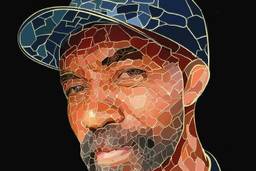
In 1905, Leo Tolstoy wrote a scathing letter to the Times newspaper of London, attacking governments in general and the Czar in particular, describing him as a “weak-minded Hussar officer, standing below the intellectual level of most his subjects, grossly superstitious and of coarse tastes.” The pundits of the English press grew indignant at this act of lèse-majesté and a smear campaign erupted, with one journalist deriding the author of War and Peace for his inability to understand the intricacies of war.
Viewing these happenings from Trieste, Italy, a young James Joyce could not believe his eyes. Normally slow to anger, Joyce scribbled an apoplectic letter to his brother, writing, “Do they think the author of Resurrection and Anna Karénin is a fool? Does this impudent, dishonourable journalist think he is the equal of Tolstoy, physically, intellectually, artistically, or morally? The thing is absurd. … Perhaps that journalist will undertake to revise Tolstoy more fully—novels, stories, plays and all.”
Consider this anecdote a disclaimer. Those hoping for a combative critical appraisal of José Saramago’s newest work, The Cave, will have to look elsewhere. At age 81, with a Nobel Prize under his belt, Saramago has spent a lifetime working at his craft, honing it to keen perfection. The dark, nebulous forces and impossible logic of his dream-like novels have led many to compare him with Kafka, but in the generosity he lends to his creations, in both their descriptions and actions, he shares certain affinities with the aforementioned Russian prince of letters. Showing no signs of senility, only stoic, hard-won wisdom, The Cave is a work of a master.
—————
Cipriano Algor, a widowed 64-year-old potter, lives in a small village, firing his earthenware plates and water jugs in the archaic kiln built by his grandfather. We first meet him making the hour-long journey to the contracted buyer of his wares, “The Center,” a vast, ever growing complex of shops, amusement parks and apartments located in the heart of an unnamed city. Upon arrival, however, Cipriano is met by the “assistant head of department in charge of reception” who curtly informs him that the Center will take only half of his pottery and from hereon purchase no more. The reason? Sales are down because of “the launch of some imitation plastic crockery, it’s so good it looks like the real thing, with the added advantage it’s much lighter and cheaper.”
His life’s labor and meaning reduced to nothing, Cipriano returns home, dejected and depressed. Further compounding his misery, his son-in-law Marçal, who works at the Center as a security guard, soon expects a promotion to “resident guard,” meaning the family would have to leave the home of their ancestors and move permanently to the Center. Though obstinate in his refusal to relocate, Cipriano, without any means to provide for himself, has little choice. There is no alternative.
A possible reprieve arrives when his loving daughter Marta suggests Cipriano try his hand at a different form of pottery: clay figurines. The two scour an encyclopedia for inspiration and settle on six human types: a clown, a jester, a nurse, a mandarin, an Eskimo and “a bearded Assyrian.” To their surprise, the Center accepts their proposal and places a gigantic order. Racing against time, Cipriano goes to work, aided by Marta, Marçal and the stray dog taken into their household, who is named Found.
The setup is vintage Saramago: an ultra-contemporary parable, pitting flawed but noble characters against the blank, unfeeling face of modernity. But if the tale itself seems simple and straightforward, it’s told in a style rich in complexity, humor and depth. Saramago takes his time, drawing out his characters and surroundings in slow, patient circles.
Cervantes, his fellow Iberian ancestor, doled out “infinite drubbings” to his creations; Saramago, more gently, offers infinite digressions. His discursive sentences begin, then wander playfully, searching under a rock for an insight or chasing a firefly to some understanding, before finally tying up, always neatly, his original point. The lover of commas will find them in abundance here.
—————
Such abundance, in all its manifestations, permeates Saramago’s fiction. He can fashion lists as lengthy as Rabelais—and does so twice in The Cave, with great comic brio—but something more profound is at work here. He has stated that his novels aim to demonstrate “the possibility of the impossible.” The Cave untangles this paradox through its dogged insistence on an ancient, if seldom realized, human quality: generosity.
Generosity not only informs the characters actions’ toward one another, but through Saramago’s descriptive powers, it penetrates their very being. It extends to the narrator, who seems capable of omniscience but at times holds back, allowing the characters to keep their thoughts secret. Best of all, it is all-inclusive, so that even the dog Found is etched with a remarkable depth of feeling and perception. Against charges of sentimentality, it must be stated such generosity never seems faked or forced; rather, it functions as a reminder of Nabokov’s belief “that people who denounce the sentimental are generally unaware of what sentiment is.”
Of course, Saramago is no woolly optimist. For always in the background, a stern contrast to the gentle world of the Algor clan, the Center looms. Saramago’s least nuanced creation, the Center’s billboards scream with jovial menace: “WE WOULD SELL YOU EVERYTHING YOU NEED, BUT WE WOULD PREFER YOU NEED EVERYTHING WE SELL.” But Saramago’s lack of subtlety can only be matched by the bumbling tact of global capitalist expansion. With real-life adherents of the market proclaiming its “immortality,” it is simply artistic verisimilitude when one of the Center’s executives tells Cipriano, “the Center writes straight on crooked lines and what it takes with one hand, it gives with the other.”
Worse than delusions of divine grandeur, however, are the consequences such hubris entails. Explaining Found’s perception of the outside world, Saramago, echoing Giordano Bruno’s monas monadum, or “unity of unities,” writes that he finds himself in “a whole made up of parts in which each individual is, simultaneously, both one of the parts and the whole of which he is a part.” Later on, Cipriano notes that the Center’s existence, ever enlarging, ever consuming, seems to run against this fundamental principle, appearing “bigger than the city, which means the part is bigger than the whole.” The implications are obvious. In an ironic refinement of Yeats, the Center will hold, but so firmly as to crush everything around it and thus, by definition, itself.
All logical predictions lead to this conclusion; we know it, indeed can feel it, in both mind and bone. But, as the novel’s titular reference hints, we find ourselves in a world very much like the cave described by Socrates as told to Plato—bound firmly, convinced that the puppet forms parading across our flickering television screens accurately represent reality.
For the first 275 pages, these parallels are established, but hang only loose and tenuous. In the finale, however, with a metaphysical sleight of hand, Saramago draws the two threads together seamlessly, creating an effect as immediate as it is terrifying. That night, sleepless, you roll in bed and two realizations slowly dawn: The Cave, if only briefly, has led you out of the darkness. And that fierce, frightening light you now face is an uncertain future, blazed bright by the sun of Saramago.
Viewing these happenings from Trieste, Italy, a young James Joyce could not believe his eyes. Normally slow to anger, Joyce scribbled an apoplectic letter to his brother, writing, “Do they think the author of Resurrection and Anna Karénin is a fool? Does this impudent, dishonourable journalist think he is the equal of Tolstoy, physically, intellectually, artistically, or morally? The thing is absurd. … Perhaps that journalist will undertake to revise Tolstoy more fully—novels, stories, plays and all.”
Consider this anecdote a disclaimer. Those hoping for a combative critical appraisal of José Saramago’s newest work, The Cave, will have to look elsewhere. At age 81, with a Nobel Prize under his belt, Saramago has spent a lifetime working at his craft, honing it to keen perfection. The dark, nebulous forces and impossible logic of his dream-like novels have led many to compare him with Kafka, but in the generosity he lends to his creations, in both their descriptions and actions, he shares certain affinities with the aforementioned Russian prince of letters. Showing no signs of senility, only stoic, hard-won wisdom, The Cave is a work of a master.
—————
Cipriano Algor, a widowed 64-year-old potter, lives in a small village, firing his earthenware plates and water jugs in the archaic kiln built by his grandfather. We first meet him making the hour-long journey to the contracted buyer of his wares, “The Center,” a vast, ever growing complex of shops, amusement parks and apartments located in the heart of an unnamed city. Upon arrival, however, Cipriano is met by the “assistant head of department in charge of reception” who curtly informs him that the Center will take only half of his pottery and from hereon purchase no more. The reason? Sales are down because of “the launch of some imitation plastic crockery, it’s so good it looks like the real thing, with the added advantage it’s much lighter and cheaper.”
His life’s labor and meaning reduced to nothing, Cipriano returns home, dejected and depressed. Further compounding his misery, his son-in-law Marçal, who works at the Center as a security guard, soon expects a promotion to “resident guard,” meaning the family would have to leave the home of their ancestors and move permanently to the Center. Though obstinate in his refusal to relocate, Cipriano, without any means to provide for himself, has little choice. There is no alternative.
A possible reprieve arrives when his loving daughter Marta suggests Cipriano try his hand at a different form of pottery: clay figurines. The two scour an encyclopedia for inspiration and settle on six human types: a clown, a jester, a nurse, a mandarin, an Eskimo and “a bearded Assyrian.” To their surprise, the Center accepts their proposal and places a gigantic order. Racing against time, Cipriano goes to work, aided by Marta, Marçal and the stray dog taken into their household, who is named Found.
The setup is vintage Saramago: an ultra-contemporary parable, pitting flawed but noble characters against the blank, unfeeling face of modernity. But if the tale itself seems simple and straightforward, it’s told in a style rich in complexity, humor and depth. Saramago takes his time, drawing out his characters and surroundings in slow, patient circles.
Cervantes, his fellow Iberian ancestor, doled out “infinite drubbings” to his creations; Saramago, more gently, offers infinite digressions. His discursive sentences begin, then wander playfully, searching under a rock for an insight or chasing a firefly to some understanding, before finally tying up, always neatly, his original point. The lover of commas will find them in abundance here.
—————
Such abundance, in all its manifestations, permeates Saramago’s fiction. He can fashion lists as lengthy as Rabelais—and does so twice in The Cave, with great comic brio—but something more profound is at work here. He has stated that his novels aim to demonstrate “the possibility of the impossible.” The Cave untangles this paradox through its dogged insistence on an ancient, if seldom realized, human quality: generosity.
Generosity not only informs the characters actions’ toward one another, but through Saramago’s descriptive powers, it penetrates their very being. It extends to the narrator, who seems capable of omniscience but at times holds back, allowing the characters to keep their thoughts secret. Best of all, it is all-inclusive, so that even the dog Found is etched with a remarkable depth of feeling and perception. Against charges of sentimentality, it must be stated such generosity never seems faked or forced; rather, it functions as a reminder of Nabokov’s belief “that people who denounce the sentimental are generally unaware of what sentiment is.”
Of course, Saramago is no woolly optimist. For always in the background, a stern contrast to the gentle world of the Algor clan, the Center looms. Saramago’s least nuanced creation, the Center’s billboards scream with jovial menace: “WE WOULD SELL YOU EVERYTHING YOU NEED, BUT WE WOULD PREFER YOU NEED EVERYTHING WE SELL.” But Saramago’s lack of subtlety can only be matched by the bumbling tact of global capitalist expansion. With real-life adherents of the market proclaiming its “immortality,” it is simply artistic verisimilitude when one of the Center’s executives tells Cipriano, “the Center writes straight on crooked lines and what it takes with one hand, it gives with the other.”
Worse than delusions of divine grandeur, however, are the consequences such hubris entails. Explaining Found’s perception of the outside world, Saramago, echoing Giordano Bruno’s monas monadum, or “unity of unities,” writes that he finds himself in “a whole made up of parts in which each individual is, simultaneously, both one of the parts and the whole of which he is a part.” Later on, Cipriano notes that the Center’s existence, ever enlarging, ever consuming, seems to run against this fundamental principle, appearing “bigger than the city, which means the part is bigger than the whole.” The implications are obvious. In an ironic refinement of Yeats, the Center will hold, but so firmly as to crush everything around it and thus, by definition, itself.
All logical predictions lead to this conclusion; we know it, indeed can feel it, in both mind and bone. But, as the novel’s titular reference hints, we find ourselves in a world very much like the cave described by Socrates as told to Plato—bound firmly, convinced that the puppet forms parading across our flickering television screens accurately represent reality.
For the first 275 pages, these parallels are established, but hang only loose and tenuous. In the finale, however, with a metaphysical sleight of hand, Saramago draws the two threads together seamlessly, creating an effect as immediate as it is terrifying. That night, sleepless, you roll in bed and two realizations slowly dawn: The Cave, if only briefly, has led you out of the darkness. And that fierce, frightening light you now face is an uncertain future, blazed bright by the sun of Saramago.
Brian Cook was an editor at In These Times from 2003 to 2009. He now works on the editorial staff of Playboy magazine.








